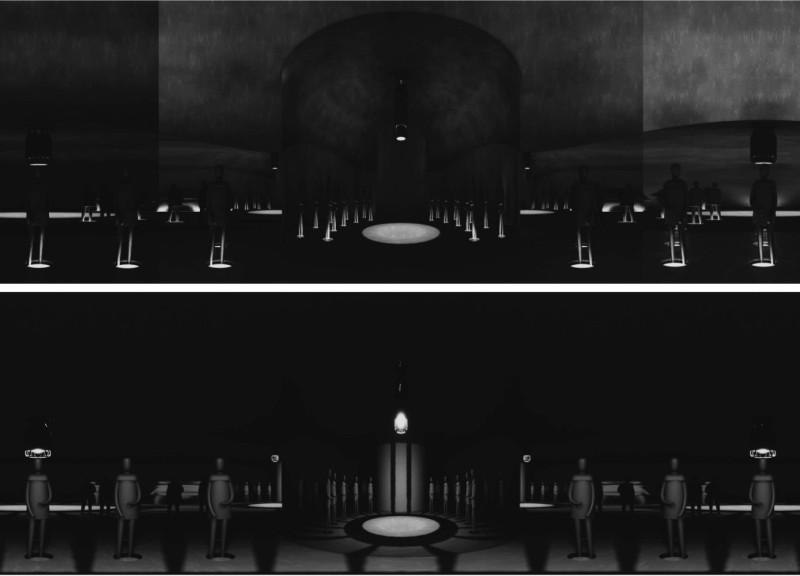5 key facts about this project
At the core of this project is the commitment to sustainability, reflected in its strategic use of materials and incorporation of green technology. The building façade, cladded in a combination of locally sourced stone and recycled aluminum, showcases not only aesthetic appeal but also an emphasis on reducing the carbon footprint. Large, strategically placed windows maximize natural light, creating warm and inviting interiors while minimizing the need for artificial lighting. The integration of solar panels on the roof demonstrates the project’s focus on renewable energy sources, fostering a sustainable lifestyle for its users.
Functionality is a key aspect of this architectural design. The layout has been meticulously planned to ensure ease of movement and accessibility for all users. The ground floor is dedicated to commercial spaces, fostering a sense of community by encouraging local businesses to thrive. Above, residential units feature open-plan living areas that promote interaction among residents, while also providing private retreats. The incorporation of flexible spaces allows for adaptability to changing needs, ensuring that the project can remain relevant over time.
Unique design approaches are evident throughout the project, particularly in its interaction with the outdoor environment. Thoughtfully landscaped communal gardens provide a serene escape from the urban hustle, enhancing the overall user experience. These gardens serve not only as a recreational area but also as a space for community gatherings and events, emphasizing the project’s intention to cultivate a sense of belonging among its users. The use of permeable paving in outdoor areas further exemplifies the design's ecological sensitivity, facilitating rainwater absorption and reducing runoff.
The architectural language employed in this project is characterized by clean lines and a balance of materials that create visual interest without overwhelming the senses. The thoughtful interplay between solid and void, light and shadow, imbues the structure with a dynamic quality that changes throughout the day. The design embraces modern minimalism, placing an emphasis on function without sacrificing aesthetic values.
In addition to its visual and functional attributes, this project is a testament to the evolving nature of urban architecture. By prioritizing community, sustainability, and adaptability, it addresses contemporary societal needs while also looking towards the future. Throughout the design process, the importance of user experience and environmental impact has been a guiding principle, resulting in a project that is both practical and inspiring.
For those interested in exploring this project further, there is a wealth of information available in the architectural plans, sections, and designs that detail the intricate thought processes behind each element. Opportunities to engage with the architectural ideas presented will provide a deeper understanding of how such designs can influence urban living and promote sustainability within a community context. Exploring these details will undoubtedly enrich one's appreciation for the project and its role in redefining contemporary architecture.


 Allen John Dofredo Alteza
Allen John Dofredo Alteza 




















